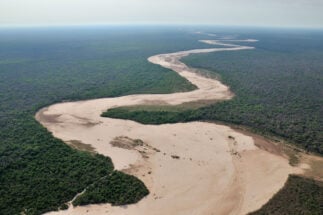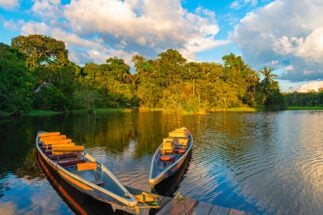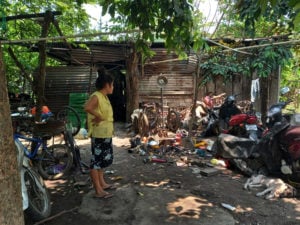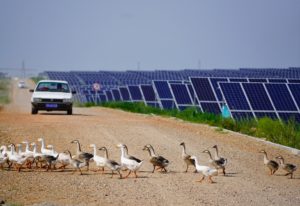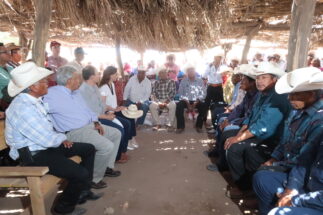At the recent Climate Leaders Summit convened by the US and attended by global policymakers, Argentina’s president Alberto Fernández called for accelerating the implementation of “payments for ecosystem services and debt swaps for climate action”.
Since 2018, Argentina has been immersed in a severe debt crisis. This is jeopardising macroeconomic stability, blocking the investments needed to meet climate commitments and reinforcing dependence on exports of soy and beef, with negative consequences for ecosystems.
In search of solutions, the Fernández government is pushing for an agreement with its creditors to reduce part of the foreign debt, or at least the interest, in exchange for increased environmental and climate commitments. With diverse climates, territories and biomes, Argentina is a richly biodiverse country and has good potential for such initiatives, experts say.
“Poor countries are indebted and do not have enough fiscal space to allocate resources to environmental protection. They must be able to divert the flow of resources from debt repayment to measures needed to prevent further desertification, secure long-term food supplies and control overfishing,” explains Oscar Soria, campaigns director of the global social movement Avaaz.
Nature conservation debt relief programmes have existed for decades and have been implemented in Latin American countries. However, their scale has been limited, with the total debt renegotiated under these agreements estimated at US$2.6 billion between 1985 and 2015. They were also questioned for a lack of transparency.
Argentina’s debt crisis
Since 2015, Argentina’s indebtedness has accelerated. The increase in public debt leapt from 52.6% of GDP to 104.5% in 2020 alone. Proportionally, this rise was even greater in the case of debt denominated in foreign currency, which rose from 30.1% to 79.9% between 2014 and 2020.
104.5%
Argentina's debt-to-GDP ratio at the end of 2020
A significant portion of the new debt is explained by a 2018 credit agreement with the International Monetary Fund, for a total of US$57 billion. This made Argentina organisation’s number one debtor. The collapse of the national economy led the IMF to suspend funds in mid-2019.
Last year, the government successfully restructured its debt with private creditors. In the short term, therefore, the main problem of Argentina’s debt is concentrated on the repayment of the US$44 billion IMF loan, the total amount disbursbed before funds were suspended.
“The renegotiation of the debt with the Fund becomes essential if we take into account that maturities in 2022 and 2023 exceed US$19 billion,” says Pablo Manzanelli, a researcher at Centro Cifra.
Combined maturities in the next two years are equivalent to the Central Bank’s total international reserves and far exceed Argentina’s trade surplus, the only source of foreign currency available since it is frozen out of international capital markets. Meanwhile, in the immediate future Argentina faces a US$2.4 billion debt maturity with the Paris Club.
The environmental factor
President Fernandez’s proposal comes in the context of a global sovereign debt crisis in many developing countries, driven by the Covid-19 pandemic. This has led to discussions on new financial instruments to reduce debt and at the same time respond to the climate and biodiversity crises.
the country has been degrading its environmental capital in giant steps. In all regions there are serious situations to address
Proposals include issuing new bonds with biodiversity and climate change targets and reducing debt owed by countries to multilateral bodies such as the IMF and the World Bank. Both of these institutions have pledged to present a “green debt swap” instrument at the UN’s upcoming COP26 climate summit in November.
“Argentina is a perfect candidate. To access debt reduction operations or green bond issuance, states should design a policy aligned with the 2030 Sustainable Development Goals and the Paris Agreement, which has to be approved and evaluated,” said Kevin Gallagher, director of the Global Development Policy Center at Boston University.
Agreeing to use one of these instruments would allow Argentina to take care of its natural capital, on which much of its economy depends. According to World Bank data, Argentina is the sixth largest country in the world in terms of cultivated land, with 39 million hectares located mainly in the fertile Chaco-Pampa plains.
Argentina, like many Latin American countries, suffers from a long series of environmental problems, which have deepened in recent decades. The growth of agricultural and livestock activities, among others, has led to the loss of biodiversity, deforestation and desertification.
“In the last twenty years, the country has been degrading its environmental capital in giant steps. In all regions there are serious situations to address, from the loss of native forests in the Gran Chaco to ecosystem degradation in Patagonia and the gradual destruction of wetlands in the Litoral,” said María Elena Zaccagnini, former co-president for the Americas at the Intergovernmental Science-Policy Platform on Biodiversity and Ecosystem Services (Ipbes).
According to official data, Argentina is among the ten countries with the highest net forest loss in the period 2000-2015. It lost around 6.5 million hectares between 1998 and 2018. The most affected region is the Chaqueño Park, the second most deforested area in the region after the Amazon.
6.5million
hectares of Argentina's forest were lost between 1998 and 2018
A green swap
In addition to promoting the green sovereign debt swap, Fernández’s government seeks to highlight Argentina’s role as a provider of ecosystem services and food. The ministry of environment is working with the consortium The Food and Land Use Coalition (FABLE) on environmental standards in the agricultural sector.
“It is not only about measuring the environmental service in terms of carbon sequestration, which is very well developed, but also about defining the value of water regulation and the maintenance of biodiversity according to the characteristics of each region,” explains Pedro Laterra, a researcher at the Bariloche Foundation.
The Argentine government is also working together with its counterparts in Brazil, Chile, Paraguay and Uruguay as part of the Southern Agricultural Council (CAS) to prepare a common position at the UN Food Systems Summit, which is scheduled for September this year.
“Latin America and the Caribbean is the largest provider of ecosystem services, accounting for more than half of the world’s primary forests and biodiversity,” says a statement from CAS, prepared by its member agriculture ministers in May. They also sought to better quantify the “global positive externalities”, or overall benefits, that come from agriculture and agroforestry.
The CAS is also expected to lobby for future global rules for trade, investment and debt based on environmental criteria. The EU has already begun discussing the introduction of import taxes on products with a high environmental footprint, which could affect Argentina.
Ariel Martínez, secretary for policy coordination at Argentina’s agriculture ministry, argued that the country “cannot lose jobs or regress in social conditions” as a consequence of implementing more environmental policies. He also called for “discussing new trade rules, possible tariffs on carbon emissions and financing flows for the energy transition”.
